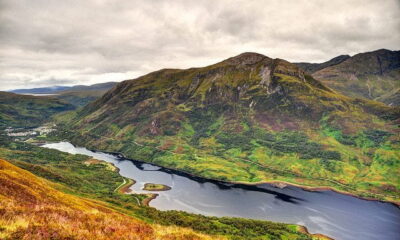

Environment
Munduruku Indigenous Peoples Rally to Save Tapajos from Dam Construction
The Munduruku Indigenous Peoples came together with Greenpeace Brazil for an unofficial demarcation of their Brazilian Amazonian land. The community-led demarcation, which includes putting up signs to mark the territory, is part of a campaign to save the Tapajos River from the construction of São Luiz do Tapajós (SLT) dam.
The demarcation is the latest effort in a global campaign to protect the Tapajós River from the Munduruku, fighting for the formal recognition of their land for many years, have sparked a global movement for the protection of the Tapajós and are calling on global companies to distance themselves from the controversial project.
“This an important battle not just for the Munduruku people, but for everyone around the world since we are talking about one of the biggest forests that still exist in the planet,” says Juarez, the chief (cacique) of Munduruku Sawré Muybu Indigenous Land.
The land demarcation involves marking the land with fifty signs, similar to those used by the Brazilian government, to indicate the territory is Munduruku land. The demarcation process would normally be executed by the federal government as the next step in formal Indigenous Land recognition. A report in April by FUNAI (the Brazilian Indigenous Rights Agency) recognised this area as Munduruku traditional land. Questions around Indigenous land rights have also resulted in the suspension of the licensing process for the SLT dam but the formal land ownership process has not yet moved forward.
Placing the signs is one of a range of activities at the Sawré Muybu indigenous village, including installing solar panels in the community that Munduruku and Greenpeace activists will collaborate on in the coming weeks, to draw international attention to the threat of the destruction of the Tapajós River.
“We are standing with the Munduruku to help ensure their rights are upheld and the dam licensing is cancelled once and for all,” said Greenpeace Brazil Amazon Project Leader Tica Minami. “Not only will this dam change the Munduruku way of life forever, it will also have massive impacts on the special, endemic biodiversity of the region.”
If approved, the SLT dam would be the first of five planned in the Tapajós River. It would have a reservoir of 729 square kilometres (almost the size of New York City), flooding part of the Munduruku land and drive an estimated 2,200 square kilometres of indirect deforestation as a result of roads and other infrastructure related to the construction and migration to the area.
Greenpeace is calling on international companies like Siemens to confirm they will not get involved in the project by supplying components like the generators. Although their company profile is focussed on green solutions, Siemens was involved in the controversial Belo Monte dam, the most recent destructive dam to be built in the Amazon.
“Siemens is known for their leadership in renewables and technical innovation. However they may provide the parts needed to build this dam, in direct contrast to their green image. Siemens must confirm they will not get involved in this unwanted, unnecessary and devastating dam,” said Tica Minami.


 Environment10 months ago
Environment10 months agoAre Polymer Banknotes: an Eco-Friendly Trend or a Groundswell?

 Environment11 months ago
Environment11 months agoEco-Friendly Home Improvements: Top 7 Upgrades for 2025

 Features9 months ago
Features9 months agoEco-Friendly Cryptocurrencies: Sustainable Investment Choices

 Features10 months ago
Features10 months agoEco-Friendly Crypto Traders Must Find the Right Exchange





























